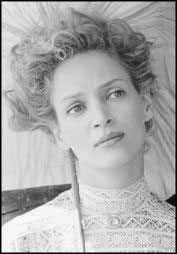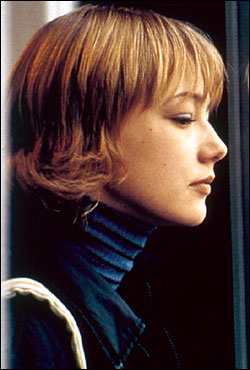You always felt there was a real person behind Ava Gardner’s breathtaking looks. I can testify that early during her contract days with MGM, she had the warmth and kindness to come over and talk, casually, to a shy, gawky 13-year-old she’d caught staring at her during a Malibu bistro opening. Her voice, I remember, was low, the South not yet trained out of it, but it was the generous impulse beneath it that remained—obviously, to this day.
If anyone less wised-up than Lee Server had tackled Ava Gardner’s compound-complex life in Ava Gardner: Love Is Nothing (St. Martin’s, $29.95), it might truly be unreadable. As it is, the lady (1922–1990) remains unknowable, deeply affecting, and forever unsure of any talent she had, except for seduction. A few of the legends are true: It was a picture of her at 17 in a Manhattan storefront that started everything. A canny MGM scout, “reliable” after discovering Joan Crawford, sent word that the shy North Carolinian should be tested, and his premonition held.
Server is clear-eyed about what that meant. His portrait of the “squat wolves from the executive floor” of MGM (naming names and predilections), and of the famously paternal and bespectacled studio head Louis B. Mayer, looking “like an owl made out of pig iron,” gives an idea of the gamut she might run.
Her first meeting with Mayer found him in a purple rage. The studio’s mini–gold mine, Mickey Rooney, who for all his freckled-faced Andy Hardy innocence was an experienced lech at 21—and probably earlier—planned to marry Ava. It was the only way that virginal Ava would come across. They married in the jittery January after Pearl Harbor, when she was 19, and thus began a lifelong pattern of shock and awe by husbands/lovers/drop-ins who would experience her innate, prodigious sexual gifts. It marked another pattern: quick marriages—the bookish jazzman Artie Shaw came next—followed by quicker disillusion and divorce. (Later with Sinatra, it was simple mutual volatility.)
If only she’d been sure of her value on-screen. MGM kept her under contract for 17 years, but lent her out for her strongest performance, in The Killers, purest 1945 noir; and for her most obvious casting, as the goddess herself in One Touch of Venus. For stone fans, though, Pandora and the Flying Dutchman held her signature moment as the predestined Pandora strips down and swims to the Dutchman’s boat. Nudity was only in the most optimistic eye, but Gardner, wet haired and bare shouldered at the foot of that ladder, was indelible. MGM, which in her starlet days wanted to fill in that cleft in her chin with mortician’s wax, now left her alone, and, in the words of Man Ray (who painted her for this faintly surreal film), she was “absolutely ravishing.”
Incisively funny—on Mogambo with Clark Gable, Ava drawled, “If you say, ‘Hiya Clark, how are you?’ he’s stuck for an answer”—she was quickly becoming disenchanted with the business of the movie business. In The Barefoot Contessa, supposedly closest to 32-year old Gardner herself, she found no rapport with Bogart, her needling co-star, nor with director Joseph Mankiewicz, who in any case was reduced to printing what scenes he could get between Bogart’s (deadly) wracking coughs. Server makes an eloquent case for her work as an Anglo-Indian in Bhowani Junction for director George Cukor, shot in India under the most difficult physical conditions, but MGM’s savage re-editing reduced his two and a half hours to near incomprehensibility. It might have been her last great chance.
THEN CAME SINATRA. After 1949, they were lifelong lovers, but twin tempers and mutual jealousy made their time together impossible. “We never fought in bed,” she said, “we fought on the way to the bidet.” At the onset, he was a married Catholic, and she was the bigger star. Once married, his star began to rise, and he was his old pugnacious self. Yet she remained loyal: At a rally for Adlai Stevenson, a wisenheimer called her husband a “washed-up 119-pound has-been.” With perfect ladylike diction, Ava responded, “Well, I’ll tell you, 19 pounds is cock.”
She left the States for Spain, and Spain for England and years of appalling behavior; she was never without some man: the bullfighter, the controlling millionaire, the celebrated chef, beach boys, actors of any nationality and celebrity. As for prodigious drunks, she goaded some too far—George C. Scott’s fists put her in the hospital. She also made a great many treasured and durable friendships. Her profession made her feel “dirty and useless,” she told her friend, the poet Robert Graves, but what else did she have? Server can’t explain the source of her rootlessness, and neither could she, and the few men with the wit to do it are dead: Graves, who might have been too dazzled to want to; and John Huston, who knew the real Ava well enough to tease a salty, relaxed performance out of her in Night of the Iguana.
In London in the 1970s, she hired a gentle young Ecuadorian woman to live with her. When Gardner asked her to accompany her to Mexico for The Life and Times of Judge Roy Bean, she asked, “What kind of job do you do?” Laughing richly, Gardner replied: “For heaven’s sake, don’t you know I’m a lousy movie star?”








